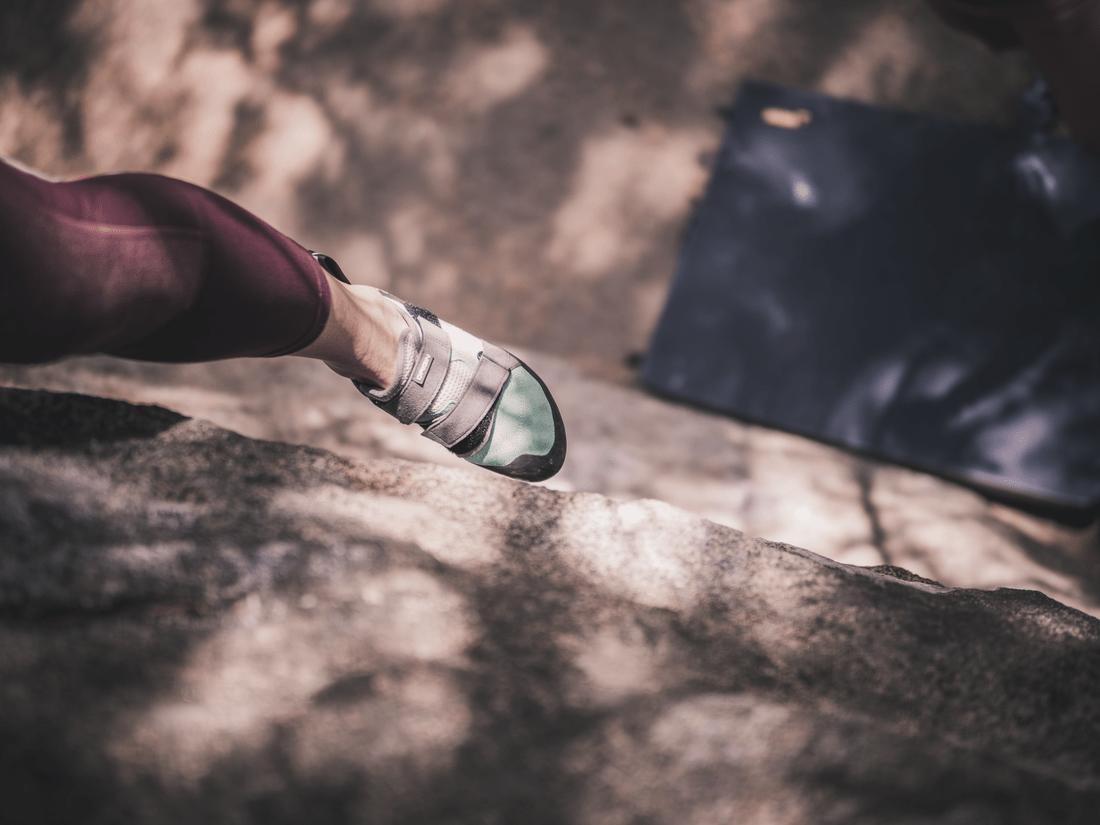When I was first getting into indoor bouldering I took a climbing class to learn the basics. As I was learning to shift my hips and trust my feet, I found myself slipping and sliding in my too-big rental shoes. At the end of the last class, my instructor sat the group down and told us about buying our first pair of climbing shoes.
The instructor told us to measure our feet, find our European size, and then choose a shoe two sizes smaller. The shoes, he said, should be so painful that we couldn’t wear them for longer than five minutes. They would stretch eventually, he promised.
Mine never did. And after day after day of suffering at the crag—my feet gasping for air whenever I let them out of their confines—I decided to do something radical: I picked shoes in my actual size. They fit like a glove and allowed me to climb with ease. And, they didn’t stretch!
“If you get a climbing shoe that fits,” said Nici Bissonnette, climbing instructor for the Washington Alpine Club, “it doesn’t stretch because it already fits your foot.”
Do you need climbing shoes?
The short answer is: Yes. According to Bissonnette, your footwear is an essential piece of gear for any sport, including climbing. During climbs, climbing-specific shoes make it possible to use your feet to grip tiny edges in the rock, smear on sloping slabs and protect your feet from sharp protrusions.
That said, if you’re just getting into climbing, there shouldn’t be a rush to buy shoes right away. “Most gyms have demo shoes that you can try for free,” Bissonnette said. “Try before you buy. It’s not until you really put them on rock or plastic that you really have an understanding of how [the shoe] feels on your foot and how it performs.”
There’s also nothing wrong with using gym rentals for a while, especially if you’re unsure if climbing will be your forever sport.
What does a good fit feel like?
When Bissonnette first started climbing, she got the same advice I did: get a small, curved climbing shoe. But she couldn’t put her feet on the wall because they were too curled. When she took them off, her feet would be red and her toe knuckles dented.
“Climbing shoes are designed to fit your foot well enough that there’s not much between you and the rock,” said Madeline Kaminski, sales lead at the Salt Lake City REI and a climber of six years. “They’re supposed to conform to your foot almost like you’re wearing nothing.”
As for Bissonnette, she knows her shoes fit correctly when her foot is being hugged. Kaminski, using another metaphor, believes they should fit like a glass slipper. Both agree that there shouldn’t be air pockets.
“A good fit is when your foot fills the shoe,” Kaminski said. “If you’re getting air movement in your heel, it’s not the best fit. If you have too much space in the toes, it’s not the best fit.”
And remember, all brands are different, so they will fit differently. The best shoe, according to Kaminski, offers the least amount of space between your foot and the shoe while still offering the most comfort.

What does a bad fit feel like?
Shoes that fit poorly will be one of two things: too tight or too loose. A shoe that is too tight, as we mentioned before, will cause undue pain. Kaminski explained that if your shoe is too tight, it will be too uncomfortable to step on the small edges necessary when climbing. Plus, she said, too-tight shoes can lead to injury—she’s even seen toenails fall off due to the pressure.
On the other hand, shoes that are too loose are also a problem. “If you get a shoe that’s too loose, you start expending a lot of energy in areas you don’t necessarily need to,” Kaminski said. “Your feet will work harder and cramp more and your shoe will slip around.” In summary, too-loose shoes make climbing unnecessarily difficult.
What are the types of shoes?
There are three types of climbing shoes: neutral, moderate and aggressive.
Kaminski breaks it down:
- Neutral shoes have the flattest profile and are likely to be the most comfortable for all-day wearing and for beginner climbers.
- Moderate shoes have a balance of comfort and precision in the toes, and are ideal for slab routes, crack climbs, multi-pitch climbs and slightly overhung sport routes.
- Aggressive shoes are more downturned and pointed, almost like a crescent shape, and are best for challenging or overhanging climbs.
Of course, at the end of the day, the best shoes are the ones that best fit your feet and the style of climbing you’re doing.
“Buy something that you want to wear, because then you’ll want to climb,” said Kaminski.
